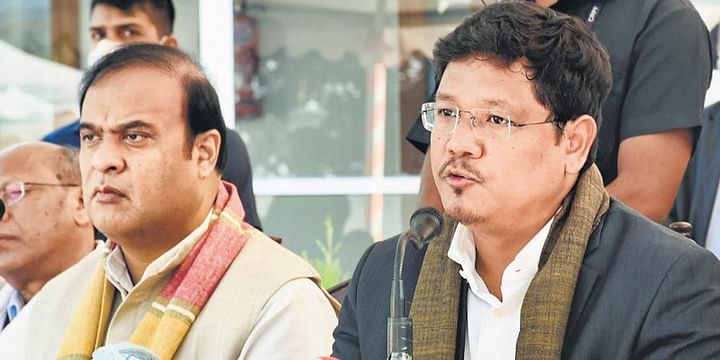
Assam & Meghalaya to show the way with 'breakthrough' deal on border rows

Assam and Meghalaya are all set to ink an agreement to iron out differences on six of the 12 border dispute areas, raising hope that the breakthrough could be a possible template for addressing similar inter-state disputes elsewhere in the region.
On principle, after several rounds of meetings both the state governments have almost reached an understanding on resolving the disputes on the basis of give and take in six areas, jointly inspected by ministers and officials of the states, said Assam’s border areas development minister Atul Bora.
Meghalaya deputy chief minister Prestone Tynsong hinted that the agreement could be signed on January 21 to partially settle the border disputes between the two states.
To build consensus on the agreement, the two governments have decided to further consult the proposed deal with Opposition parties, student unions and other stakeholders before signing an agreement, possibly on January 21, the day Meghalaya will celebrate 50 years of its statehood.
Assam chief minister Himanta Biswa Sarma and his Meghalaya counterpart Conrad Sangma have already held four rounds of closed-door talks on the vexed issue. The last meeting was held on Wednesday (January 12).
Also read: Manipur polls: BJP edgy but Congress in disarray
In the meeting they discussed “confidential reports” submitted by the regional committees, comprising ministers and officials the two state governments had separately formed in August, to suggest measures to resolve border disputes.
Of the 12 disputed sites, the two states have decided to first address the problem in six least complicated areas namely Khanapara, Fahala, Baklapara, Ratacherra, Tarabari and Gizang, which fall under Kampur, Kamrup Metropolitan and Cachar districts of Assam and West Khasi Hills, Ri-Bhoi and East Jaintia Hills districts of Meghalaya.
Though both the state governments are tight-lipped about the contours of the agreement, sources said the two contesting parties are trying to hammer out a solution on the basis of historical facts, ethnicity, administrative convenience, contiguity of the land and demography.
Assam also has border disputes with Arunachal Pradesh, Nagaland and Mizoram. The border rows with Arunachal Pradesh and Nagaland have now reached the Supreme Court.
The BJP governments in Assam and Arunachal Pradesh are trying to make an out-of-the-court settlement. Sarma and his Arunachal counterpart Prema Khandu recently discussed the possibility.
Nagaland and Assam have also recently withdrawn their respective forces from the disputed sites, scaling down the border tension.
Sarma recently expressed hope that Assam’s border disputes with Meghalaya and Arunachal Pradesh would be solved by this year.
Also read: Entire northeast will become major driver of India’s growth: Modi
Addressing a meeting of the North Eastern Council (NEC) in Shillong last year, Union Home Minister Amit Shah had urged all states in the region to solve their border disputes by August 15, 2022, when the country will be celebrating 75 years of its independence.
The call went largely unheeded as soon border disputes erupted between Assam-Meghalaya, Assam-Arunachal Pradesh, Assam-Nagaland and Assam-Mizoram.
Police forces of Assam and Mizoram even exchanged gun fires at a disputed border site on July 26, 2021, leaving seven people, including six Assam police personnel, dead and many others injured.
Against this backdrop, the likely agreement between Assam and Meghalaya assumed added significance.
“If Assam and Meghalaya can amicably settle the disputes among them, then the same formula could be emulated elsewhere in the region to resolve border disputes,” said Chingwang Konyak, president of the Nationalist Democratic Progressive Party (NDPP), the ruling party of Nagaland.
Konyak’s optimism is shared by Rosalynn Hmar, a legal adviser of Zofa Welfare Organisation of Mizoram, an Aizawl-based civil organisation ‘fighting’ to protect the state’s geographical area.
“It is a positive development. If the agreement is finally signed with the consent of all stakeholders, it will surely set an example for others to follow,” Hmar said.

